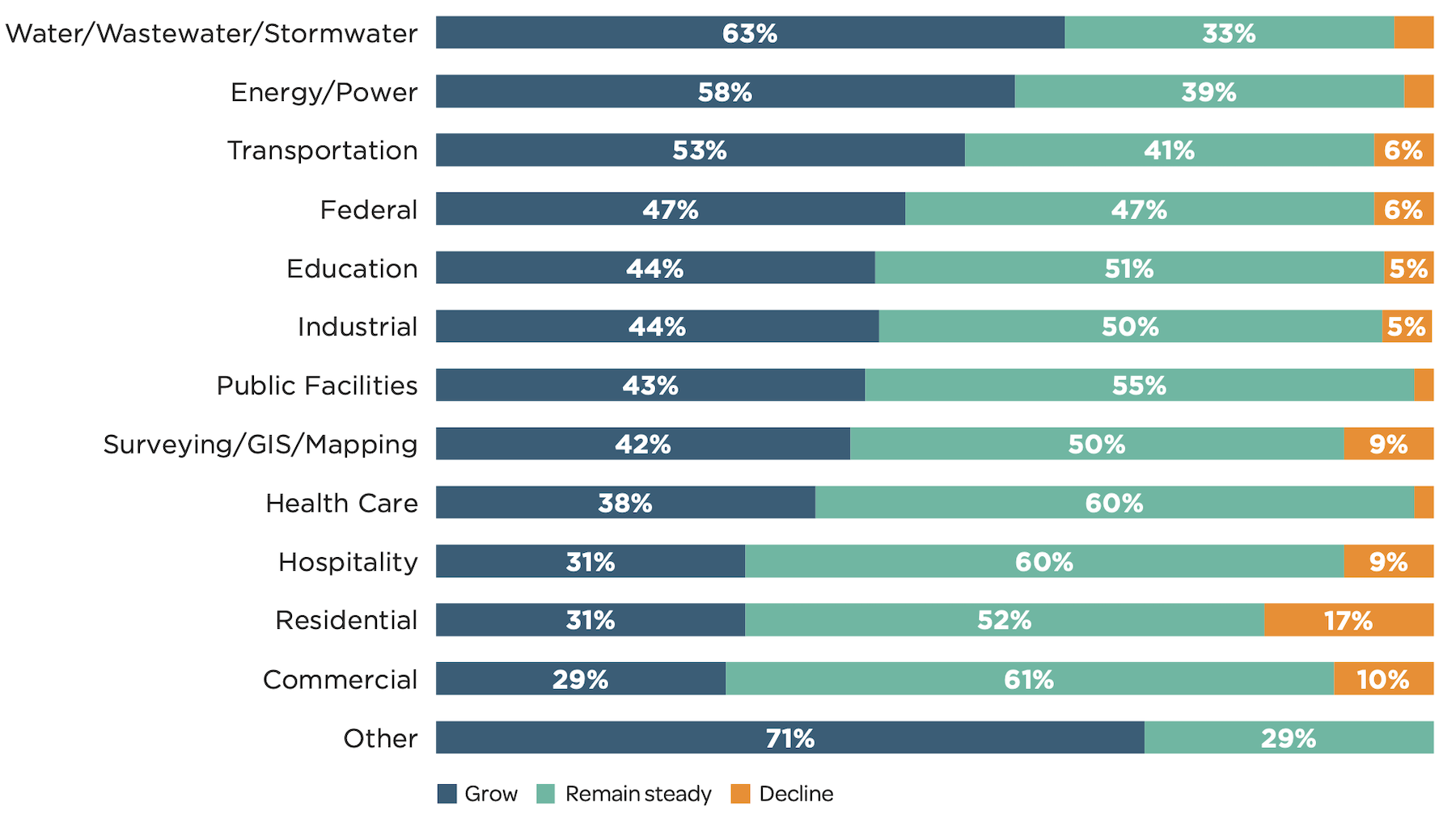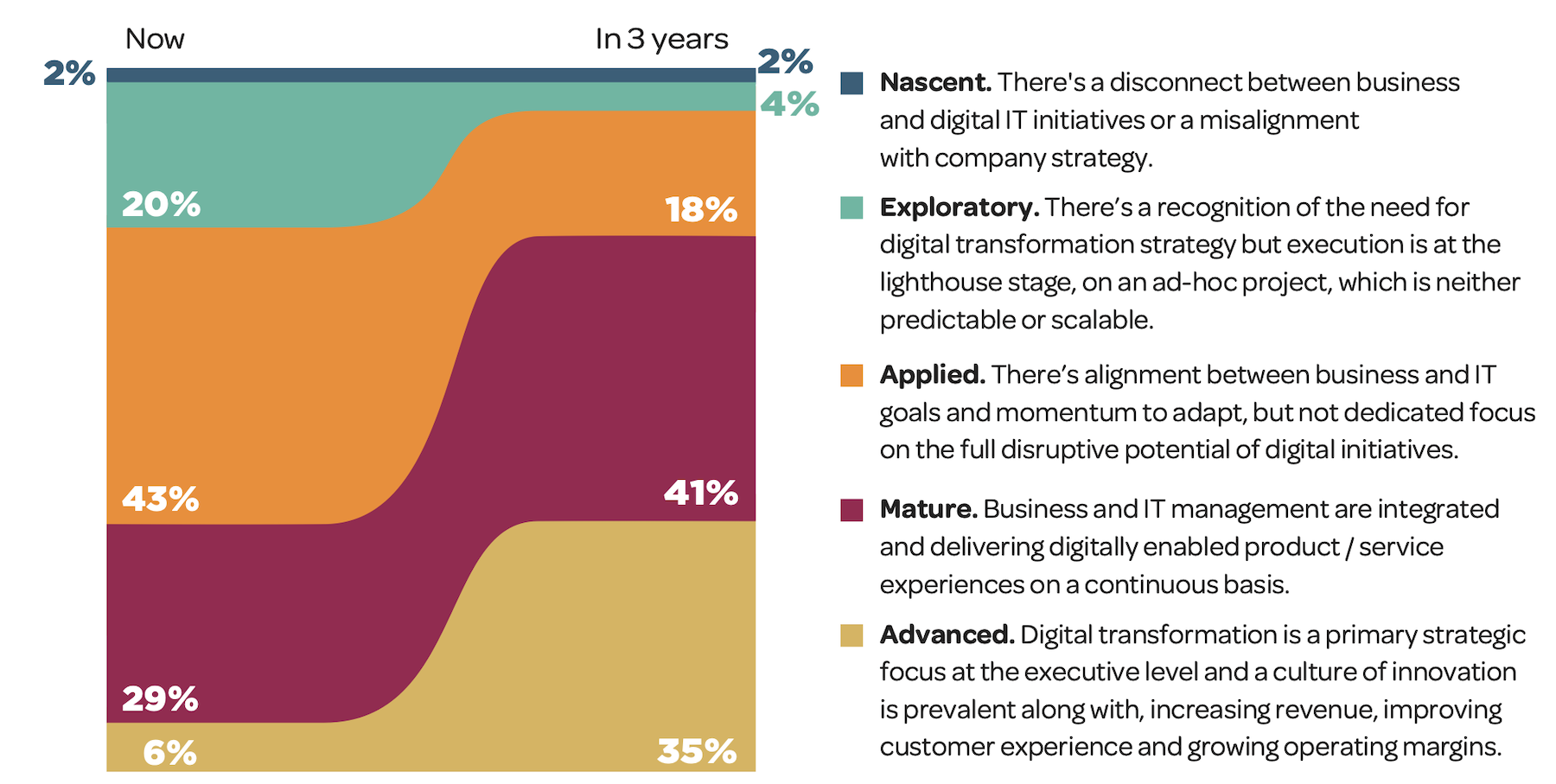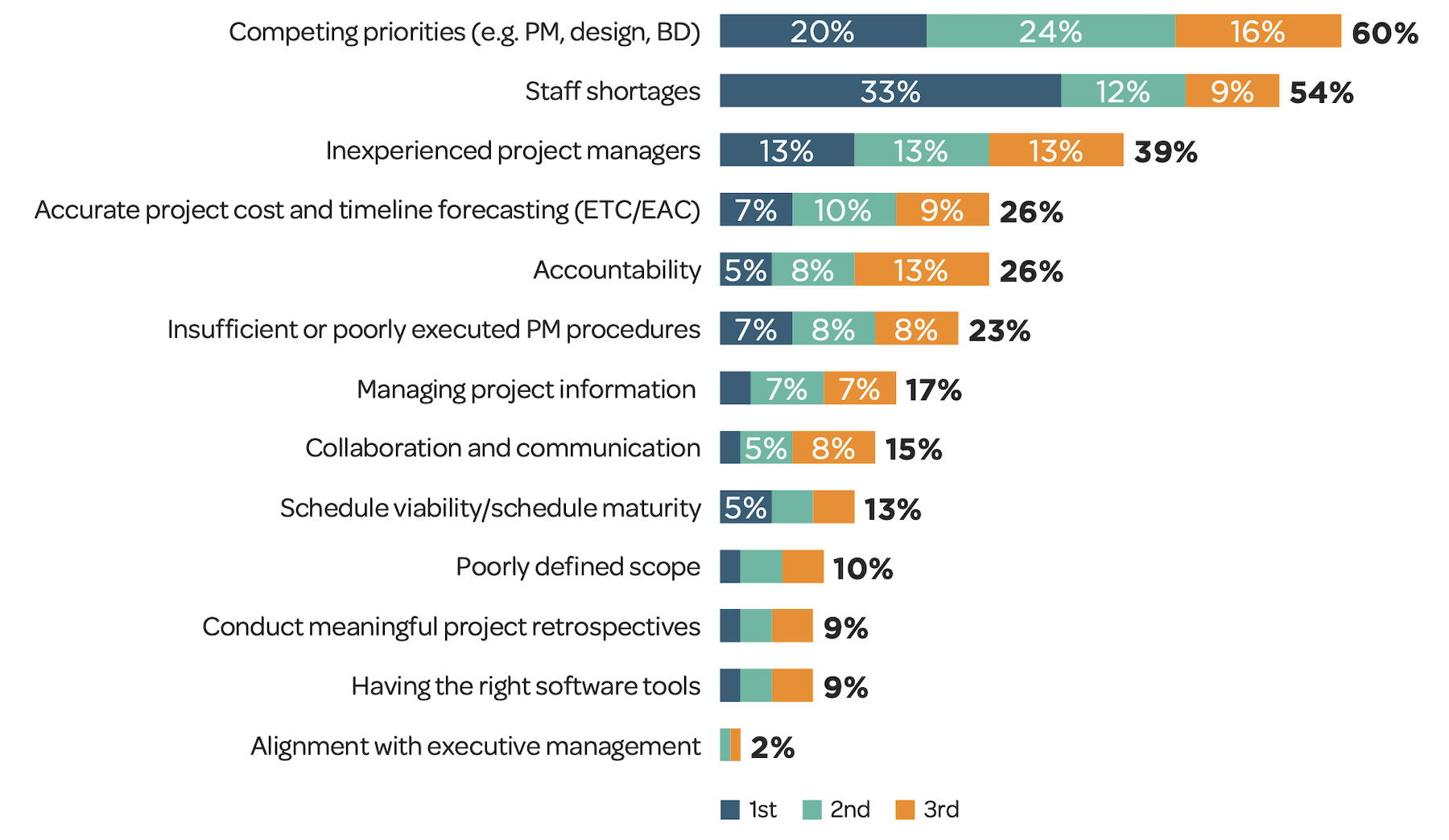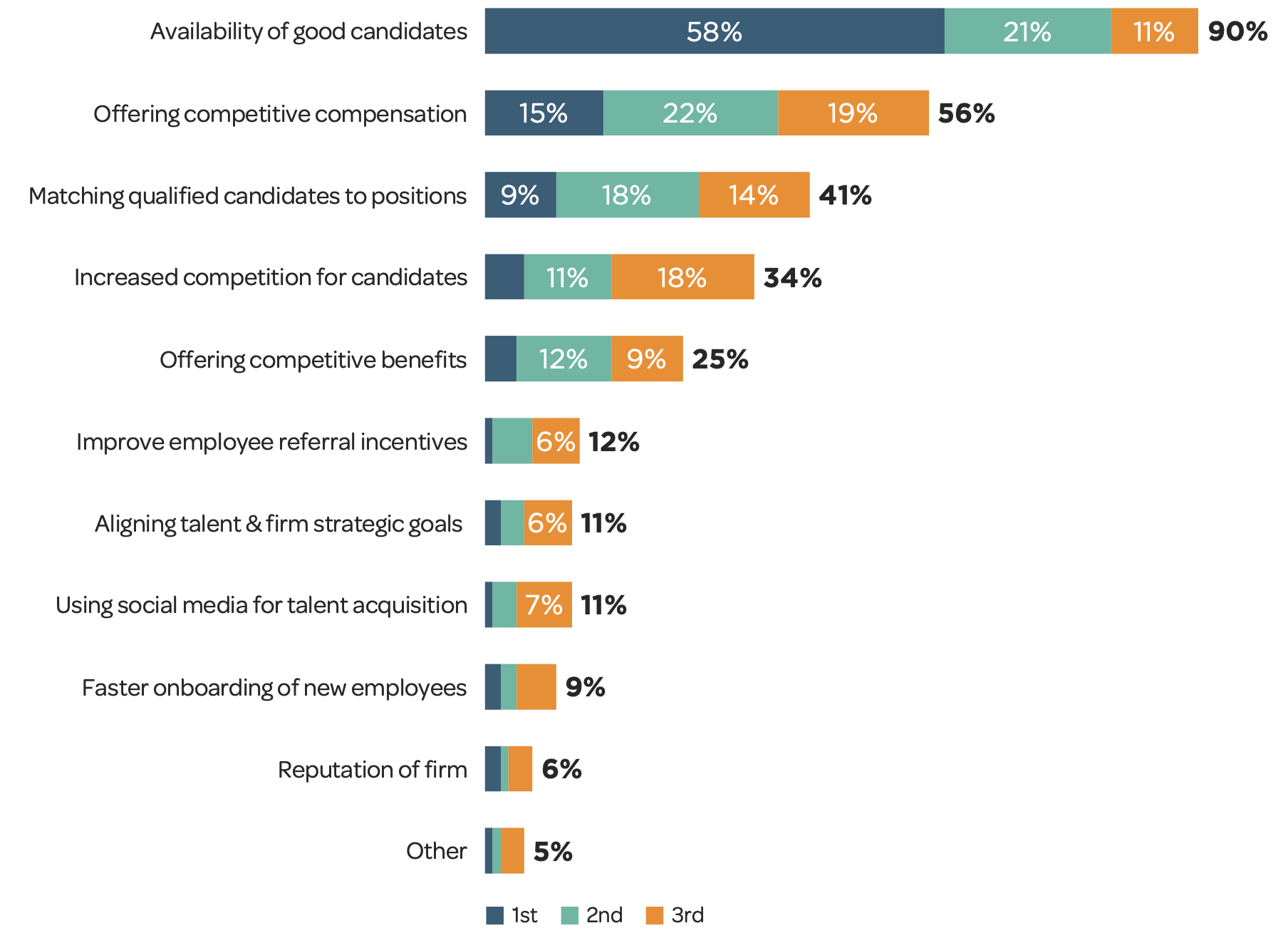There is growing curiosity about how artificial intelligence and machine learning fit into architecture, engineering, and construction. A new survey of A/E firms found that more than three-fifths of 652 respondents expect AI to improve their operational efficiency.
That survey, though, also found that the same portion of respondents wasn’t using AI yet, and two-thirds admitted they were struggling with where and how to apply AI.
These findings are part of the 45th annual Clarity Architecture & Engineering Study, a comprehensive report conducted by the enterprise software provider Deltek, and sponsored by AIA, the American Council of Engineering Companies, the Association of Consulting Engineering Companies|Canada, and the Society of Marketing Professional Services. The survey was taken between January and March of this year.
The report is organized to explore trends in Technology, Business Development, Human Capital Management, and Financial Management.

It found key financial metrics had held steady in 2023, reflecting an equilibrium following general economic volatility, inflationary pressures, and talent shortages observed in recent years. The survey’s respondents were generating, on average, 18.7% operating profit on net revenue that they forecast would grow that year by 10.9%.
The volume of proposal submissions and contracts awarded increased in 2023, yet the overall value of those contracts receded compared to the previous year. Work on existing buildings continued to be a strong opportunity area, notably in reconstruction, renovation and interiors versus new builds. Indeed, business has been so robust that firms have had the luxury of being more selective about the projects they accept.
But challenges remain: while high talent turnover has waned, worker shortages persist and many firms continue to make do with less, requiring the best-performing A/E firms to seek operational efficiencies and to cross-train talent.
Expanding tech use continues to be a strategic priority

The report observes that, more than ever, A/E leaders are making technology a primary strategic focus. In doing so, Deltek urges those firms to turn to their own staffs for guidance, tap outside expertise, and consider client needs above all. Once A/E firms establish strategic priorities for technology, perceived cost will transition to an investment with long-term payoffs. Until then, “firms that allow costs to prevent them from advancing their business will fall behind. Firms must see past individual competing interests and expenses,” the report states.
When it comes to technological sophistication, A/E firms hold a relatively high opinion of themselves, with 35% self-classifying as “advanced” and “mature” on a digital transformation spectrum. Another 43% identify their firms as in the “applied” stage, which is in the center of the spectrum.
(The irony of these responses is that A/E firms are still reliant on manual data entry, especially for operations, administrative, and accounting. It’s not surprising, then, that 64% of respondents prioritized the creation of strategic technology implementation plans and 56% indicated the need to educate staff on critical technology trends.)

Looking ahead, 76% of firms are more than twice as likely to envision themselves as “advanced” and “mature” in just a few years. Another 18% expect to reach the “applied” stage, leaving only six percentage points in the immature “exploratory” and “nascent” stages.
Despite their relatively modest usage rate so far, firms largely expect AI to help most with improving operational efficiency (62%), improving project timeline/delivery (52%) and reducing overhead costs (35%). These priorities spotlight the urgent need to refine internal processes to yield cost savings and operational improvements.
On the other hand, concerns about data and cybersecurity have not abated for A/E firms, as more than 60% of respondents ranked it in their top three challenges for their IT operations two years in a row, with 29% identifying it as their No. 1 challenge.

Almost half of firms report they leverage cloud solutions for more than 60% of their firm’s infrastructure, systems, workstations and storage. Significantly, even firms with historically few cloud solutions (0% to 19% leverage) have started their digital transformation journeys, jumping from 18% to 23% in one year.
Nearly one in four firms—16%—now offers technology services to clients as a revenue generator, or has one under consideration (7%). These services include technology consulting, application development, smart buildings/smart infrastructure and digital twins, among other services.
Career development programs being added
The report’s other revealing findings include:
•Firms with formal business development processes increased slightly to 46%. The report states that diversification is “strategically important,” as is finding the right teaming partners to identify and pursue opportunities outside of traditional offerings;

•Competing priorities (60%) and staff shortages (54%) ranked as the top two project management challenges, indicating that project managers currently feel like they’re getting stretched too thin and without sufficient support. Firms reported that 58% of projects were on or ahead of schedule, the lowest rate in seven years (it was 75% in 2017). Consequently, more firms are investing in project management training;

•Given the ongoing shortages in skilled labor—turnover still hovers around 14%—a growing number of firms are introducing and adopting structured career development programs. Overall, firms with career development plans grew to just under 40%, a 13-percentage-point increase year over year. Medium-sized and large firms demonstrated the most substantial growth in this area with medium-sized firms growing from 37% to 48%, and large firms climbing from 32% to 56%.
More firms are also turning toward providing better benefits to attract talent. More than a quarter of firms now utilize competitive benefits, up four percentage points year over year.
Related Stories
Airports | Aug 22, 2024
Portland opens $2 billion mass timber expansion and renovation to its international airport
This month, the Portland International Airport (PDX) main terminal expansion opened to passengers. Designed by ZGF for the Port of Portland, the 1 million-sf project doubles the capacity of PDX and enables the airport to welcome 35 million passengers per year by 2045.
AEC Tech | Aug 19, 2024
Harnessing AI to revolutionize architectural design and creativity
Architects are wondering if AI will replace us. For Vessel, the gains offset the fear. We believe there is wisdom in the unattributed quote, “You won’t lose your job to AI. You will lose your job to someone using AI.”
Energy Efficiency | Aug 9, 2024
Artificial intelligence could help reduce energy consumption by as much as 40% by 2050
Artificial intelligence could help U.S. buildings to significantly reduce energy consumption and carbon emissions, according to a paper by researchers at the Lawrence Berkeley National Laboratory.
Products and Materials | Jul 31, 2024
Top building products for July 2024
BD+C Editors break down July's top 15 building products, from Façades by Design to Schweiss Doors's Strap Latch bifold door.
Smart Buildings | Jul 25, 2024
A Swiss startup devises an intelligent photovoltaic façade that tracks and moves with the sun
Zurich Soft Robotics says Solskin can reduce building energy consumption by up to 80% while producing up to 40% more electricity than comparable façade systems.
Great Solutions | Jul 23, 2024
41 Great Solutions for architects, engineers, and contractors
AI ChatBots, ambient computing, floating MRIs, low-carbon cement, sunshine on demand, next-generation top-down construction. These and 35 other innovations make up our 2024 Great Solutions Report, which highlights fresh ideas and innovations from leading architecture, engineering, and construction firms.
AEC Tech Innovation | Jul 4, 2024
Caution competes with inevitability at conference exploring artificial intelligence for design and construction
Hosted by PSMJ, AEC Innovate in Boston found an AEC industry anxiously at the threshold of change.
Contractors | Jun 4, 2024
Contractors expect to spend more time on prefabrication, according to FMI study
Get ready for a surge in prefabrication activity by contractors. FMI, the consulting and investment banking firm, recently polled contractors about how much time they were spending, in craft labor hours, on prefabrication for construction projects. More than 250 contractors participated in the survey, and the average response to that question was 18%. More revealing, however, was the participants’ anticipation that craft hours dedicated to prefab would essentially double, to 34%, within the next five years.
AEC Tech | Apr 30, 2024
Lack of organizational readiness is biggest hurdle to artificial intelligence adoption
Managers of companies in the industrial sector, including construction, have bought the hype of artificial intelligence (AI) as a transformative technology, but their organizations are not ready to realize its promise, according to research from IFS, a global cloud enterprise software company. An IFS survey of 1,700 senior decision-makers found that 84% of executives anticipate massive organizational benefits from AI.
BIM and Information Technology | Mar 11, 2024
BIM at LOD400: Why Level of Development 400 matters for design and virtual construction
As construction projects grow more complex, producing a building information model at Level of Development 400 (LOD400) can accelerate schedules, increase savings, and reduce risk, writes Stephen E. Blumenbaum, PE, SE, Walter P Moore's Director of Construction Engineering.

















